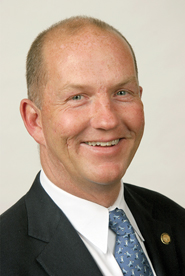In 2011, electronic trading and fragmentation drove the Canadian equities market into the 21st century-at least by U.S. standards. As a result, regulators will take center stage in the coming year to ensure the Great White North’s markets stay accessible, secure and true to the Canadian spirit.
The Canadian markets caught up to their U.S. counterparts this past year, as new trading venues arrived there-such as Instinet’s ICX and BLX dark pools and Goldman Sachs’ Sigma X-more algorithms hit trading desks, and overall trading volume increased. The traditionally high-touch and big-bank-run marketplace has matured, and it now more closely mirrors that of its U.S. cousin.
According to market professionals, the Canadian market structure has raced ahead of regulation and control, leading to concerns about fair access, dark pools, high-frequency trading and gaming. Regulators are now tasked with catching up with advances in trading systems.
New order types are coming from both the public exchanges and alternative trading venues, which has led to a more fragmented marketplace. The Toronto has introduced TMX Dark, and Alpha ATS rolled out Intraspread, two new order types that sources said are attracting increased interest and volume. As these order types gain acceptance, liquidity has left either the upstairs market or other venues. For the Canadian buyside, it’s a win-win, as they are mostly concerned with getting the best liquidity and price with a minimum of information leakage.
But not all are happy with more order types or venues.

"The common thought is that things are moving too fast here," said James Duncan, senior vice president and director of international trading at Canaccord Genuity and chair of the Canadian Security Traders Association. That is, many believe innovation is pushing forward unchecked and without a proper understanding of potential consequences.
Regulation, Duncan added, is needed beforehand to provide the framework to ensure a stable trading environment. "New order types shouldn’t be driving changes in our market structure," he said. "Rather, market structure changes should be driving the need for new order types."
He added that many Canadian trading venues, like their U.S. counterparts, are trying to capture order flow without regard to the changing market structure. And that is a problem.
"We’ve lost sight of the big picture of how we should be dealing with the changing market structure and at the same time building confidence in the markets," Duncan said. "I don’t want to see flickering orders of 100 shares at a time, guys just trying to capture spreads and rebates. Is this how we want our market structure to look?"
Lida Preyma, director for capital markets research in global finance at the G20 Research Group at the University of Toronto, said that while market structure has indeed changed in Canada, regulators such as the Ontario Securities Commission and the Investment Industry Regulatory Organization of Canada aren’t asleep at the regulatory wheel.
"It might appear that Canadian regulators have been slow to the uptake-but they are really being responsible and seeing what regulations come out of the U.S. and Europe first," she said.
Once the U.S. and European regulators examine and make policy, then Canadian regulators will carefully craft regulations that take into account the uniqueness of their own market. Also, they want to ensure they do not foster regulatory arbitrage.

"They are watching how their policies are going to coordinate in the global scheme and then act," Preyma said. "What we see is that everyone is in a holding pattern to see how regulation is going to wind up." For example, she said, future dark pool growth will likely be constrained until new regulations are formalized and published.
Several rules are on the drawing board already. One that has garnered attention is the minimum price and size requirement for orders placed in unlit venues.
The rule proposal, whose comment period has recently closed, suggested that a minimum size for passive dark orders should be no less than 5,000 shares or C$100,000 in value. Also, orders deemed small-less than 5,000 shares or C$100,000 in value-should only be allowed to interact with dark orders if they receive price improvement of at least one tick, or half a tick if the spread is only a single tick. The price improvement does not consider any maker/taker pricing economics, meaning the real price improvement might be considerably less.
More Rules Coming
Proponents of the rule are the major banks who traditionally handled most trading in the market and public exchanges. Critics, such as ATSs like Omega and Liquidnet, contend these new rules only look at child orders and not the entire parent order, so if an order is sent to several marketplaces, it is unclear to which order the rule should be applied.
This proposal has limited dark pool growth to just around 3 percent of total equity volume traded in Canada. In contrast, 13 percent of total equity trading in the U.S. occurs in dark pools.
Preyma also said regulators are finalizing rules concerning naked access, something Canada still allows. The rules, if passed, would prohibit naked access and require orders to go through a broker-dealer. The comment period closed in July, and she said a final rule could be published this winter.
A third rule, in the talking stage, deals with credit risk analysis, which could be part of the naked access rule. A potential rule could decide who is responsible for performing it and how it should be conducted.
"The beginning of 2012 promises more change, but I am hopeful for positive change," said Canaccord’s Duncan. "We at the CSTA have regular meetings with our regulators, and we hope our feedback to them will be useful in restoring Canadian markets to the deep, liquid and stable markets that they should be."
(c) 2012 Traders Magazine and SourceMedia, Inc. All Rights Reserved.
http://www.tradersmagazine.com http://www.sourcemedia.com/



